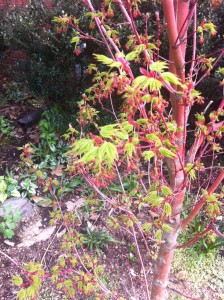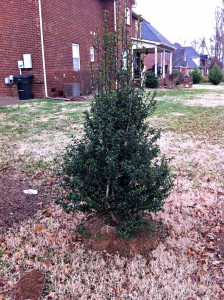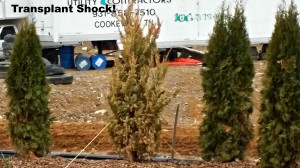You just want privacy?
I recommend evergreen plants.
You want fall color?
I recommend deciduous varieties.
Deciduous means the leaves drop off in the Fall and grow new leaves in the Spring. This is the opposite of evergreen.
Deciduous is most often used referring to shade trees. Oaks, maples, etc. drop their leaves during the dormant season between Nov.-March.
Evergreen means the leaves or needles stay on the tree or shrub year round. Evergreens are ideal for privacy screening.
Needle evergreen tree examples are pine and spruce. Holly trees and shrubs are considered broadleaf evergreen.
Is this crystal clear? Let me know on Facebook.







